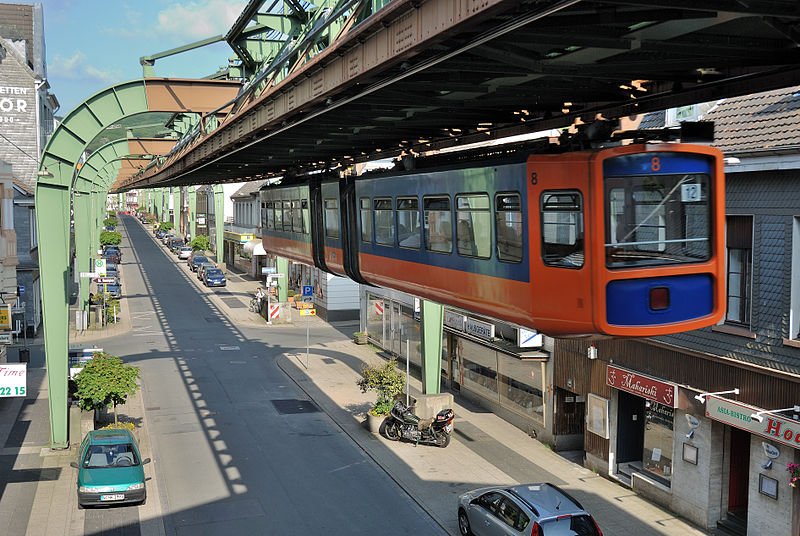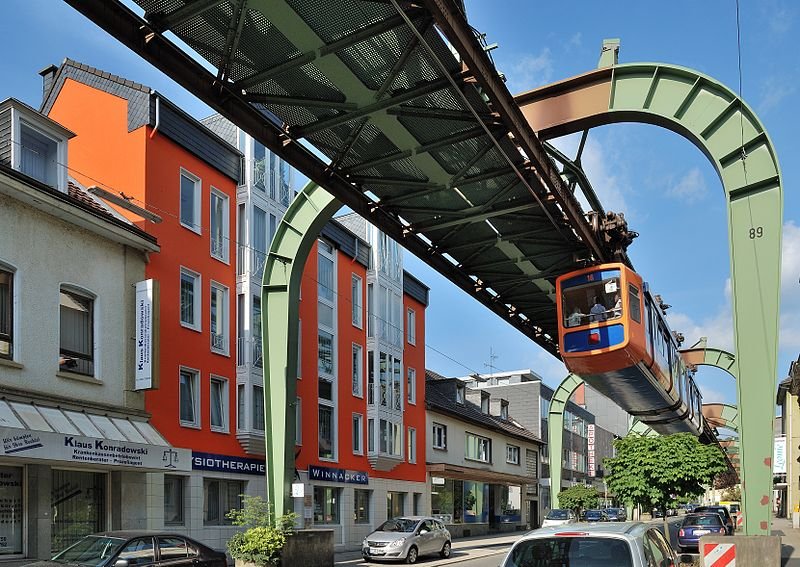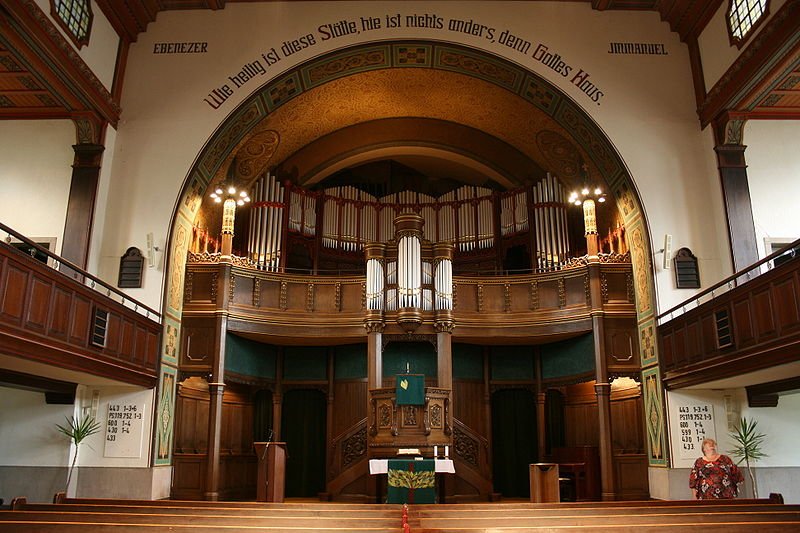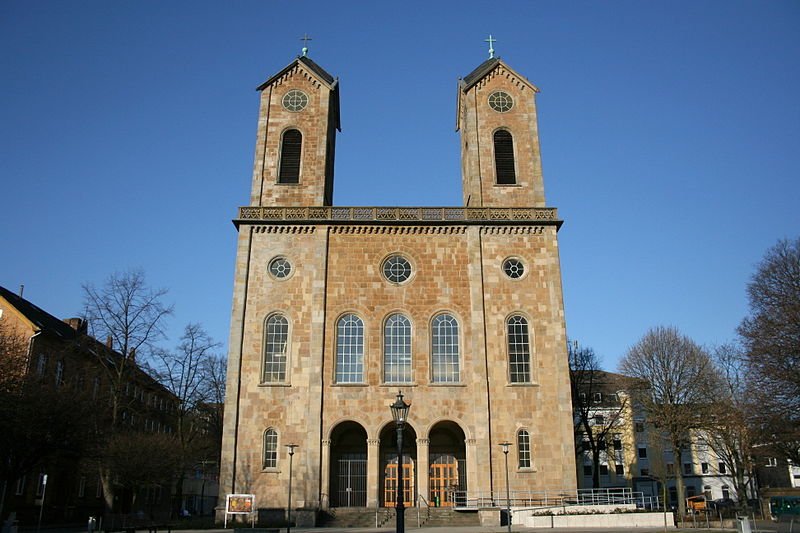 The Schwebebahn over Sonnborner Straße in Wuppertal, Germany
The Schwebebahn over Sonnborner Straße in Wuppertal, GermanySource: https://commons.wikimedia.org/wiki/File:Wuppertal-100522-13449-Sonnborn.jpg
Author: Mbdortmund

Wuppertal is a city in North Rhine-Westphalia. It covers 168.41 sq km (65.02 sq mi) and has a population of 350,000 (2011), making it the biggest city in the Bergisches Land region. The city is at an elevation of between 100 m to 350 m above sea level. It is located in a valley with the Wupper river flowing through it (hence Wuppertal, meaning Wupper Valley), and surrounded by forested woodlands and parks. Wuppertal observes the Central European Time zone (UTC+1) and in summer the Central European Summer Time (UTC+2).
 The Wuppertaler Schwebebahn, as seen from street level
The Wuppertaler Schwebebahn, as seen from street levelSource: https://commons.wikimedia.org/wiki/File:Wuppertal-100522-13466-Sonnborn_.jpg
Author: Mbdortmund

Wuppertal is famous the world over due to its overhanging trains, the Wuppertaler Schwebebahn. Designed by Eugen Langen, the trains went into operations in 1901 and are still operating today, serving 82,000 passengers daily. It is the city's biggest and most noticeable tourist attraction.
The city of Wuppertal is one of the industrial towns of the Ruhr area. It is an industrial center manufacturing textiles, metallurgy, chemicals, medicine, electrical appliances, automotive parts, rubber products, printing equipment, and others. The pharmaceutical giant Bayer has a facility here, and Aspirin, a Bayer product, was invented here in 1897 by Dr. Felix Hoffman.
 Interior of Hauptkirche Sonnborn in Wuppertal
Interior of Hauptkirche Sonnborn in WuppertalSource: https://commons.wikimedia.org/wiki/File:Wuppertal_-_Hauptkirche_Sonnborn_11_ies.jpg
Author: Frank Vincentz

The city of Wuppertal was created as recently as 1929 - even the Schwebebahn is older. Before that, it is composed of a number of industrial towns including Barmen, Elberfeld, Vohwinkel, Ronsdorf, Cronenberg, Langerfeld and Beyenburg. When these towns were consolidated as one, it was originally called Barmen-Elberfeld, but renamed the following yer in the 1930 referendum to Wuppertal, as they are all within the Wupper Valley.
As steep hills flank the Wupper river, Wuppertal likewise grew into a linear city. Due to its position as a major industrial city, it was severely bombarded during the Second World War, destroying some 40% of its buildings. Nevertheless it has managed to preserve and restore many of its most significant historic sites.
Visiting Wuppertal, Germany
To reach Wuppertal by flight, land at the Cologne/Bonn Airport (CGN). Then take a train to Wuppertal. The train ride takes about half an hour. Unterbarmer Hauptkirche in Wuppertal
Unterbarmer Hauptkirche in WuppertalSource: https://commons.wikimedia.org/wiki/File:Wuppertal_-_Unterbarmer_Hauptkirche_03_ies.jpg
Author: Frank Vincentz

Places of Interest in Wuppertal
- Die Hardt
Spacious park at the heart of Wuppertal. - Friedrich Engel's Birthplace
Birthplace of the German industrialist who wrote The Communist Manifesto with Karl Marx. - Schwebebahn
The overhanging trains of Wuppertal needs no further introduction. - Von-der-Heydt Museum
Museum showcasing 19th and 20th century German art - Wuppertaler Zoo
Local zoological gardens.

Copyright © 2003-2025 Timothy Tye. All Rights Reserved.

 Go Back
Go Back